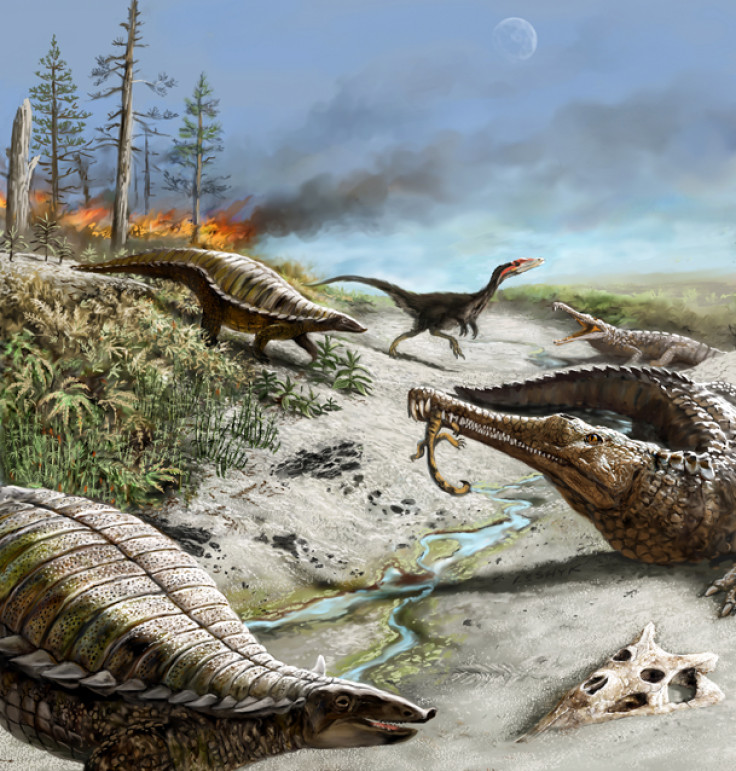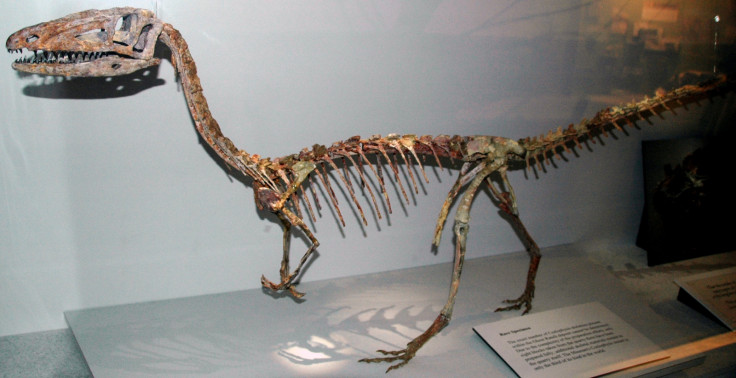Climate change: 600C wildfires kept big dinosaurs away from Equator for 30 million years

Extreme climate change 212 million years ago stopped big dinosaurs from moving into the tropics, scientists have discovered.
An international team of researchers has found the area of supercontinent Pangea that now corresponds with Ghost Ranch, New Mexico, had an extremely hot and dry climate with multiple wildfires, causing the area to reach scorching highs of 600C.
For decades scientists have debated the mysterious absence of large Triassic dinosaurs from the tropics. Despite evolving in abundance at higher latitudes (both north and south of the Equator) around 230 million years ago, they were strangely absent from the tropics.
Lead author Jessica Whiteside, from the University of Southampton, told IBTimes UK scientists have had an inkling climate change had something to do with the missing large dinosaurs, but evidence for this argument had been lacking.
"We did expect that climate played a role in terms of sorting out environmental conditions that enabled the different kind of grouping of dinosaurs that you see in the late Triassic period. For several decades researchers had reported a curious case with respect to the rise of dinosaurs. Large plant-eating dinosaurs, the predecessors to things like brachiosaurus, were much more common at the high latitudes.
"Then in the past decade it's come out that they're completely missing from the tropics and that only small carnivorous dinosaurs survived. We showed it wasn't just climate but it was these wild swings of climate where you get extreme intense heat and drought accounting for the lack of survivability of these plant-eating dinosaurs."
Publishing their findings in the journal PNAS, researchers showed that CO2 levels were four to six times higher than they are today. Using rock samples that had been deposited by rivers and streams between 205 and 215 million years ago, the team was able to establish that the region had extreme seasons of wet and drought, with raging wildfires in between that led temperatures to soar up to 600C.

"The intensity was not exactly what we expected," Whiteside said. "They were decades-long to hundred-year-long changes. We reconstructed the climate environmental history of over millions of years and we see these conditions that would be too harsh for the right sort of vegetation to sustain large plant-eating dinosaurs."
The only species able to survive such conditions were small two-legged carnivorous dinosaurs like Coelophysis, the researchers claimed.
"Our data suggest it was not a fun place," study co-author Randall Irmis said. "It was a time of climate extremes that went back and forth unpredictably and large, warm-blooded dinosaurian herbivores weren't able to exist nearer to the equator – there was not enough dependable plant food."
Researchers also warned that their findings are important to modern-day human-caused climate change. If the planet continues on its current course, similar high CO2 levels will be seen in the next few centuries, suppressing equatorial ecosystems.
Whiteside said: "This is a natural recorder of something that's happened in the past. It does show that elevated CO2 drastically reshapes land plant communities and these form the basis of terrestrial food webs. It does have an analogue in that these are similar levels predicted for 100 to 200 years in our future and the past recorder shows that vegetation that might support human populations might change."
She said that while many of the conditions are very different (the continents were united, for example), the rapid fluctuations of CO2 are similar. "There are some changes, some differences. But one thing that is the same is the magnitude of change in CO2. So there's no perfect analogue but it's one event that has played out that has shown there are drastic repercussions for vertebrate, particularly in the tropical areas."
© Copyright IBTimes 2024. All rights reserved.






